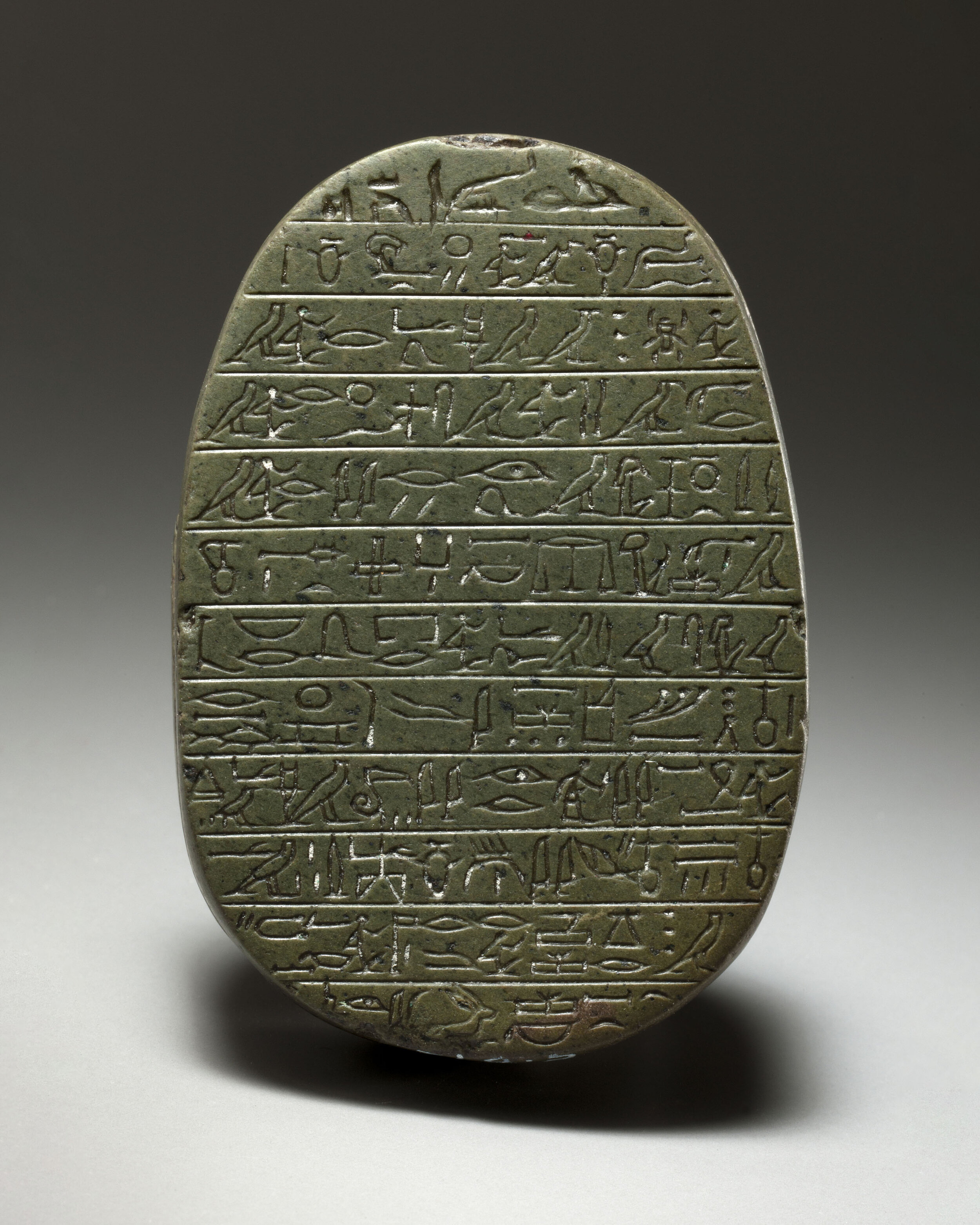Ancient Egyptian Blue Frit Bust of a Child
Ancient Egyptian Blue Frit Bust of a Child
Egyptian, Roman Imperial Period (1st century B.C.–1st century A.D.)
“Egyptian blue” frit
H : 2.2 cm
Serial: 8122
The piece appears to be complete, although the edges are chipped in places and the face is slightly damaged. The surface is partially covered with brown sand, but it is still shiny, especially on the left cheek. Despite its current condition, this piece may certainly be considered a small masterpiece of the art of ancient faience. The oval face, the nuanced modeling of the cheeks, the realistic shape of the eyes, mouth, and nose, the accurate work of the hair are all details that look as perfect as those seen on pieces of silverware or glyptic. The way the hair descends down the neck and the rendering of the locks fi x the dating of the object in the early imperial period. In this miniature bust of a child, the head and neck are modeled in three dimensions, while the shoulders simply emerge in high relief and are soldered to an elliptically shaped background. The original support, into which this elliptical element was inserted, is now lost. The absence of close parallels precludes determining what the original object was, but it might have been a medallion cup, a finger ring or a sort of panel with other busts of deities or notables of a single family. Unfortunately, no element enables us to identify the figure represented. Although the child lacks wings, the face with the somewhat chubby and idealized forms recalls a small Eros; but it could also be a high-ranking child who belonged to a prominent family in contemporary Egypt, or even a member of the imperial family. The use of vitreous materials (frit, faience, or glass) to fashion miniature portraits is uncommon but attested throughout the Roman period (at least until the fourth century), both in Egypt and in other regions of the empire. Among the most famous contemporary examples, two portraits of Augustus should be mentioned: both are slightly larger than this bust; one is made of faience (Metropolitan Museum of Art, New York), the other of glass (Römisch-Germanische Museum, Cologne).
PROVENANCE
Acquired by M. Sleiman Aboutaam in 1997.
BIBLIOGRAPHY
Some contemporary heads in faience or glass: HARDEN, D.B., Glass of the Caesars, (Corning, 1987), pp. 15-16, no. 1 (Cologne, Röm.-Germ. Museum). WALKER, S. and HIGGS P., Cleopatra of Egypt, From History to Myth, (London, 2001), p. 272, no. 321 (Metr. Mus. New York)









